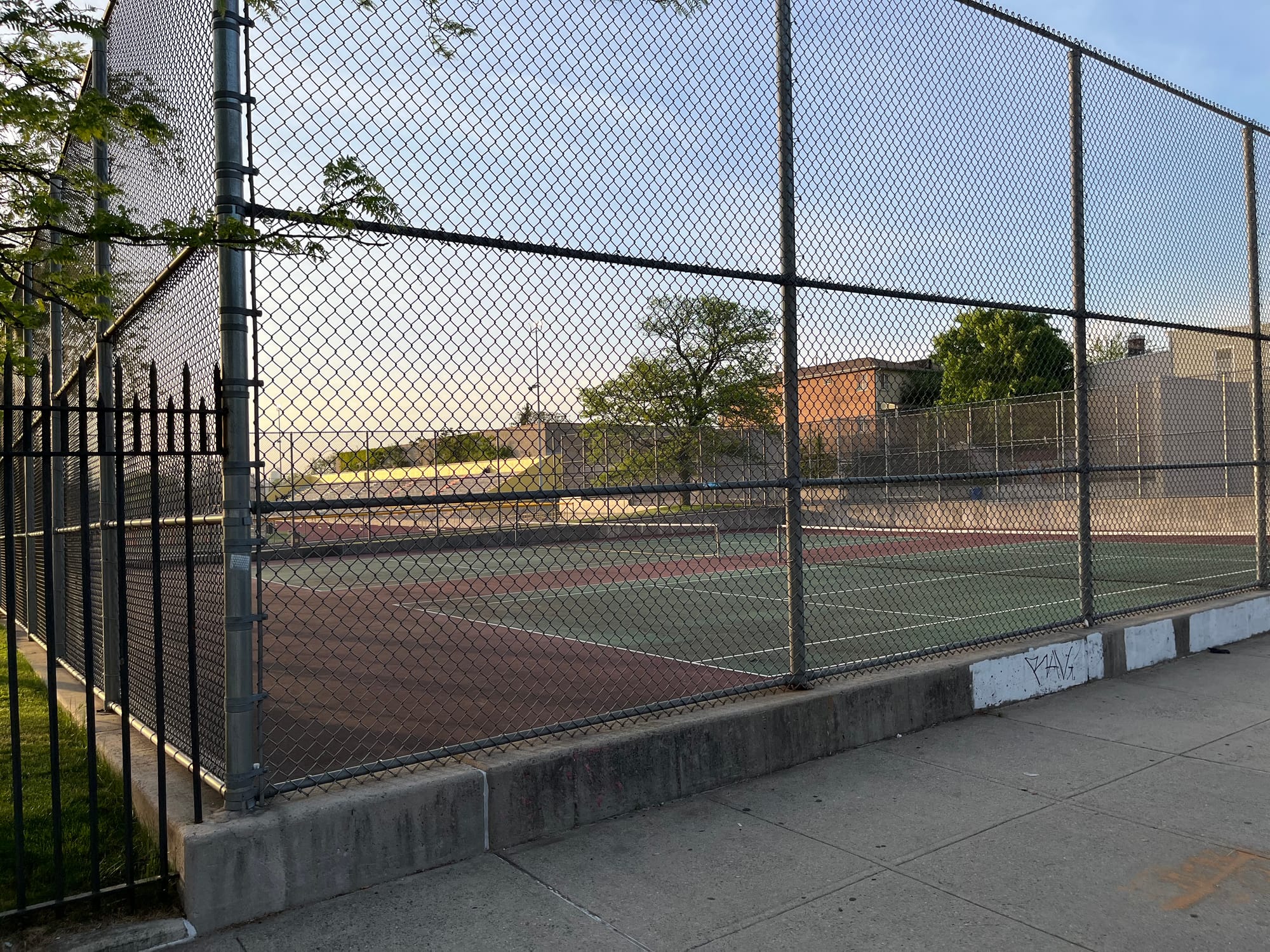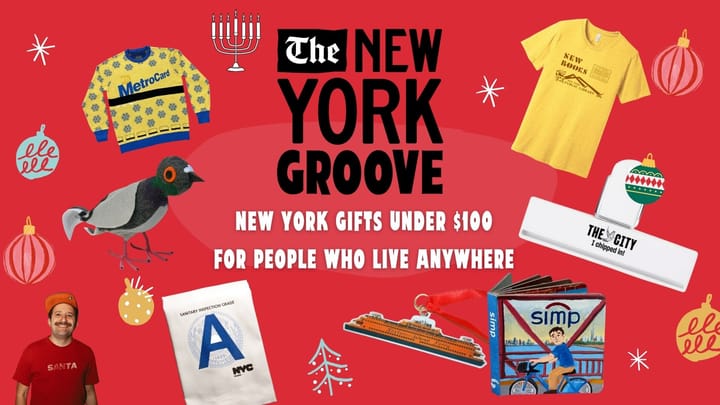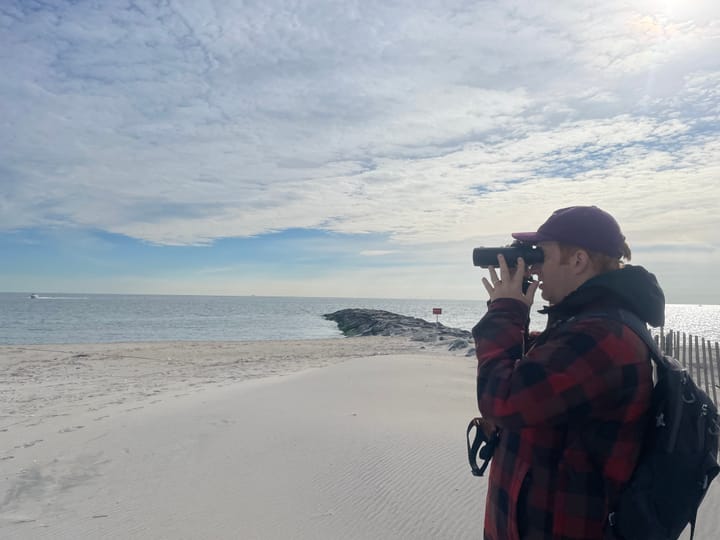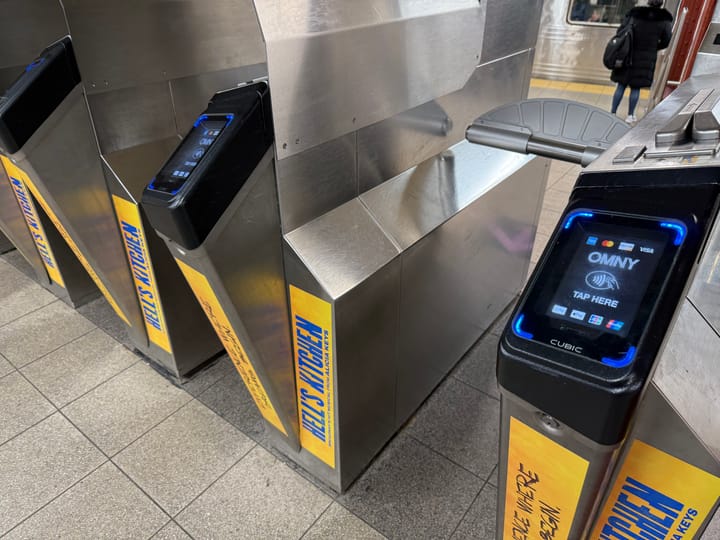Crisis in the Courts: Why tennis court spots are so scarce, and how to find one anyway
Whether you're an old hand or recently Challengers-pilled, tips on navigating the city's overstretched courts — and some ideas for how it could all be better.

Challengers, Zendaya's latest vehicle and Luca Guadagnino's latest work of erotic summer cinema, is without question the tennis threesome movie of the year. And it has a lot of you eager to serve looks while stroking your rackets this season.
But volleying with a friend (or two) in New York City isn’t as easy as donning tennis whites and heading to the park for a couple sets.
Participation in racket sports ballooned 33 percent nationally between 2020 and 2022, according to the United States Tennis Association, while interest in New York rose so much that the Parks Department sold 20 percent more permits during that time. In 2022 and 2023 the city issued more than 25,000 permits to play on its 655 outdoor courts each year, a Parks Department spokesman said. That’s made scoring an hour of court time almost as competitive as an ATP Challenger Tour event.
Haven’t seen Challengers yet but I support whatever gets you guys to stop playing pickleball
— GL (@gldivittorio) May 3, 2024
The Parks Department takes online reservations for some of its most popular locations such as Central Park, Riverside Park, McCarren Park and Prospect Park, but hour-long slots can fill up weeks in advance, forcing New Yorkers to track the reservation website for openings like they’re searching Resy for a table at Carbone.
Most other courts are first-come first-served, meaning that players can sometimes endure wait times that can last for hours before a Parks staffer schedules them. Or they must jockey with others waiting for an open court when staff aren’t present.
"Tennis is a relationship" pic.twitter.com/6W9mtxQBXq
— NYC Parks (@NYCParks) April 30, 2024
Like everything else in the city, the lack of court space comes down to money.
In 2022, Mayor Eric Adams promised to dedicate 1 percent of the city’s operating budget, or $1 billion annually, to the Parks Department to hire more staff, maintain and upgrade its facilities, and create new recreational space.
But Adams has not kept his pledge and the city hasn’t built new courts to meet demand or staffed existing ones to manage them well. (The city did reopen four courts at Jackie Robinson Park Playground in Bed-Stuy last summer, but renovating facilities can close courts for years.)
Instead, the Adams administration is proposing to shrink the department’s budget by $55 million next year to $583 million, or about half of 1 percent of the city’s budget.
The cuts will further diminish staffing at recreation centers citywide, leading to even longer wait times, parks advocates said.
“They don’t have the people to facilitate a better system that would make it easier for New Yorkers to get on a tennis court,” said Adam Ganser, executive director at New Yorkers for Parks, an advocacy group for city parks and open space. “They’re doing their best to take out the trash and clean the bathrooms, but they don’t have people who can do that at all their facilities.”
Advocacy groups are urging the city to allocate substantially more funding for its parks system. The City Council Parks Committee will hold a budget hearing on parks and recreation spending on May 20 as negotiations between the mayor and Council leaders continue before the July 1 deadline.
The courts are as crowded as ever, but that doesn’t mean you can’t get on in a reasonable amount of time. We’ll include a few tips for landing a time slot below, but allow us a brief aside:
There is another way that the city can solve the crisis in our courts, and that’s by opening up hundreds of courts on public school playgrounds.

An untapped resource
The Department of Education currently manages 386 tennis courts within school properties, a spokesperson confirmed. If the Parks Department integrated those courts into its system, it would boost the number of public tennis courts in the city by nearly 60 percent.
A new idea — you heard it here first, Groovies — would be for the city to create and implement a similar permit system that could steer revenue to schools and it could fix the geographic imbalance of tennis facilities, since there are only 19 courts in Staten Island and 93 in the Bronx.
That’s easier said than done. The city would have to spend more money to hire staff to maintain and monitor the courts when schools aren’t using them. Liability concerns would need to be addressed. Neighbors could express concern about noise or loitering when the courts aren’t in use. And getting two city agencies to work together could be a challenge on its own.
But some city officials want schools to share their recreational spaces with the public. The Trust for Public Land worked with the DOE and Parks Department to transform 200 underused schoolyards to playgrounds for families outside of school hours. And in 2022, City Council leaders called on the DOE to open its school track and field facilities in neighborhoods that lacked park space
“Far too many neighborhoods have untapped, underutilized spaces on Department of Education property,” Queens Council Member and Parks Committee Chairman Shekar Krishnan told The Groove. “Opening up these school tracks, fields, baseball diamonds and tennis courts for all New Yorkers to enjoy would provide an immediate health boost to communities across the city.”
Haven’t seen Challengers yet but I support whatever gets you guys to stop playing pickleball
— GL (@gldivittorio) May 3, 2024
How do I start playing tennis in New York City?
First of all, you need a permit to play on a Parks outdoor court.
Permits cost $15 per court per hour or $100 for the season, which lasts between the first Saturday in April to the Sunday before Thanksgiving. (If you have an IDNYC card, you only need to pay $90.) You can buy a permit in person at the Arsenal Permit Office in Central Park or at a tennis concession stand at the Central Park and Prospect Park tennis centers, but it’s easier to buy permits online.
Each session lasts an hour but you can get two hours if you’re playing doubles.
Some players eschew permits and take their chances on unstaffed courts dotted throughout the city, but they won’t be allowed onto a court when staff are present. And permits help fund the department’s operations which keep courts clean so you really should consider buying one.
Where can I get tennis equipment?
If you are truly beginning from scratch, you need a tennis racket and a few cans of balls.
NYC Racquet Sports on 157A West 35th St. and in Grand Central Terminal and Paragon Sports on 867 Broadway have large selections of tennis equipment, shoes, apparel and accessories and can restring and regrip your rackets with quick turnarounds. Paragon will even sell you a Parks Department permit, and, if you stay there long enough, you might even catch a stand-up comedy set.
You don’t need to wear white to play on a court, but the Parks Department prefers that you wear tennis shoes that won’t leave black marks on the court surface. Running shoes or another athletic shoe won’t cut it because you could hurt yourself moving side to side to smoke a forehand down the line.
Where can I play?
The best way to get onto a court, other than nabbing a reservation, remains showing up early in the morning and putting your name down for a court that allows day-of walk-ins.
If you're lucky enough to live in Queens or the Bronx, or willing to travel there, the Boogie Down and the World's Borough are chock full of tennis opportunities.
Queens contains one third of the courts in the city and its tennis centers at Alley Pond Park, Forest Park, Highland Park, Cunningham Park and Flushing Meadows Corona Park often have availability. Large complexes at Pelham Bay Park and Van Cortlandt Park in the Bronx as well as Randall's Island are worth a visit too.
If your vibe is less Challengers and more Annie Hall, the Central Park Tennis Center on 96th Street is one of the most popular places to play in the city, with 32 courts to choose from and multiple courts with walk-ins available (26 of them are clay and six are a hard court surface). Expect to wait here.
A few blocks further west, Riverside Park offers hard courts as well slippery red clay courts that are the kind you see at the French Open (the tennis ball grabs the court on clay when it bounces, making the speed of rallies slower than those on a hard court surface). Call the Riverside Clay Tennis Association’s hotline for availability, which is updated daily.
For another unique playing surface, check out the Prospect Park Tennis Center, which has a clay-like surface called har-tru, making the speed of rallies a little slower than hard court but not as slow as red clay. Two of its 11 courts are hard courts if you’d prefer a traditional surface. A handful of their courts each day are available for walk-ins so expect to wait one to two hours for a court on busy weekends.
If you’d prefer to get on a court within an hour consistently, two of your best options are Astoria Park in Queens and Lincoln Terrace Park in Crown Heights. Both have parks attendees managing the traffic during the day and on weekends, so you don’t have to dive over a net and tackle someone to get them to leave.

Do I need to make a reservation?
You don’t need one but it certainly helps.
The Parks Department is currently taking advanced reservations for Central Park, Williamsburg’s McCarren Park, Mill Pond Park in the Bronx near Yankee Stadium and the Queensboro Oval at East 60th Street under the Queensboro Bridge, which has eight indoor clay courts. Advanced reservations cost $15 per session and can book out weeks in advance. A glance before press time at Central Park’s online site showed slots available the week of May 19, and they were booking through the week of June 2.
Other locations such as Randall’s Island Park will begin taking reservations on May 24 while Prospect Park, which has a separate online portal for its reservations, opens its outdoor season on May 11.
These tennis centers each have a different number of courts available for walk-ons if you and a friend wake up and want to play that day.
Can I play on courts without staff?
Yes you can, but be prepared to wait.
If you live in a neighborhood that’s walking distance from a single or double court, then it’s worth it. But locations like Fort Greene Park, South Oxford Park, Decatur Playground and Cooper Park can be free-for-alls where you wait hours for a court to clear.
Fort Greene Park has a sign-up sheet posted out front for people to write in their tennis permit number and claim a court. Once it’s full, you’ll have to wait until the next morning.
How can I get better?
Courts that have concessions (Central Park and Prospect Park) also offer lessons to players, so it’s best to visit the court and ask staff what’s available depending on your level of play. Rates for private lessons at Central Park for instance cost between $150 and $195 per hour and can be booked a week in advance.
The City Parks Foundation also offers free lessons for kids ages 6 to 17, and its current program runs from April to June at St. Mary’s Park in the Bronx, and in Queens at Flushing Meadows Corona Park and Springfield Park.
Jackie Robinson Park in Brooklyn also offers lessons for kids and adults through longtime coach Frances Ferdinand’s HQ Tennis program, although the Parks Department recently sold rights to teach lessons to another vendor who bid higher for the service, which has upset community leaders.
Can I play at the US Open facilities in Queens?
You certainly can but it’s not a Parks Department facility. Outdoor hard court reservations cost $40 and you can book them here.
How do I get Zendaya to notice me?
We can’t help you there.




Comments ()